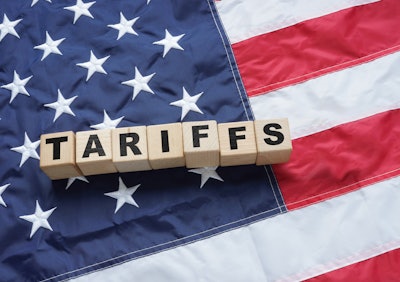
Andrii AdobeStock_1222539989
Nearly 63% of respondents to Netstock’s 2025 Tariff Impact Report anticipate a moderate to major impact from new tariffs, signaling major challenges on the horizon.
“We’re committed to helping SMBs stay informed as the market evolves,” says Ara Ohanian, CEO of Netstock. “By surveying our customers, we share real-world insights on how U.S. tariffs are impacting inventory planning. It’s all about providing businesses with relevant data that can help them navigate the current challenging supply chain landscape.”
Key takeaways:
- 75% of SMBs have either not implemented tariff mitigation strategies before, or have faced challenges doing so, indicating a still evolving response to this landscape. A significant portion (nearly 20%) have over 75% of their inventory exposed to tariff risks. While SMBs grapple with these issues, the most significant concern is rising costs, with 70% citing it as their biggest challenge.
- While tariffs on U.S. neighbors (Canada and Mexico) are dominating the conversation, nearly half of SMB respondents (47%) expressed great concern regarding tariffs impacting trade with China. In fact, 74% view tariff risks from China as either moderate or severe. This sentiment contrasts sharply with the minimal anxiety regarding tariffs with Canada (7% highly concerned) and Mexico (6% highly concerned), where approximately 60% of SMBs perceive only minimal risk.
- 57% of SMBs are taking a “wait-and-see” approach, closely monitoring policy changes and delaying major operational shifts. At the same time, 58% of SMBs are diversifying their supplier base to enhance long-term resilience. This strategic move suggests SMBs anticipate prolonged trade disruptions and are building flexibility into their supply chains. Nearshoring, while considered by only 15% of SMBs as a viable supply chain strategy, faces significant resistance. Over 40% express hesitation and 41% currently reject this approach; their hesitation stems from unpredictable tariff policies on neighboring countries, Canada and Mexico.
- A significant majority (75.8%) of respondents are utilizing data-driven tools in their supply chain strategies. This reflects the growing recognition that technology enables businesses to quickly identify the potential impacts of tariffs and other disruptions, optimize inventory levels to mitigate costs, and boost overall supply chain resilience.














